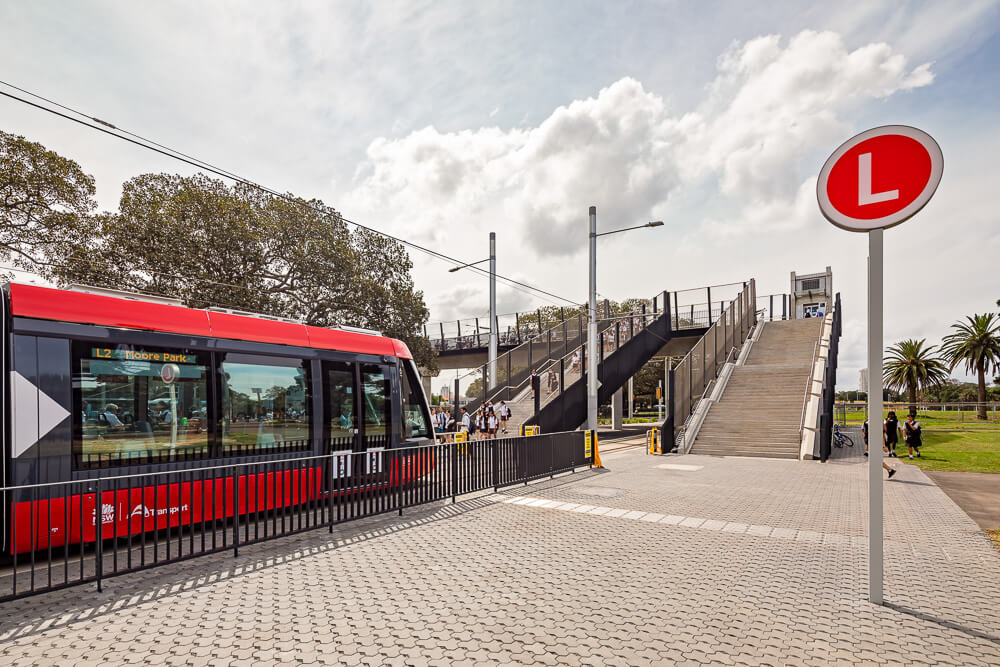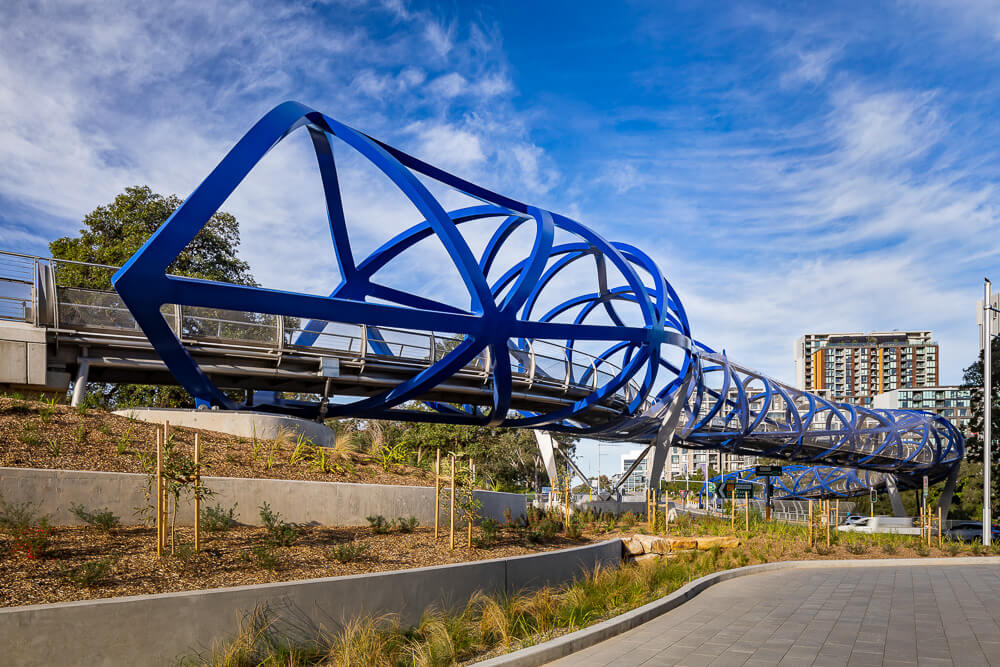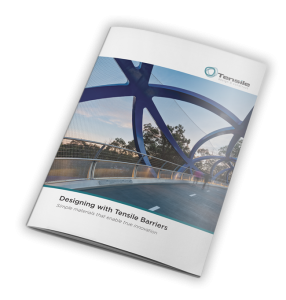Footbridges over busy roads, railway lines or watercourses need safety barriers to prevent falls from height, and some require anti-throw screens as well. All bridge barrier types must be compliant with AS 5100 for bridge design.
Here’s an overview of bridge barrier types, and the factors that go into their design.
Bridge barrier types and design considerations
Shared-use (pedestrian and cyclist) footbridges can be broadly put into two categories:
- Waterway crossings – bridges over creeks, canals, rivers and lakes.
- Transport corridor crossings – bridges over motorways and railways.
As well as the above, some vehicle bridges have footways that allow pedestrians and cyclists to cross.
All these structures will need a compliant balustrade and/or screen of some type. The design of the barrier for a bridge will depend on its purpose and environment.
Some bridges will also need anti-throw or safety screens to prevent objects being dropped or thrown over the edge onto people or vehicles below.
Road authorities conduct risk assessments to determine whether anti-throw screens on over-road bridges are needed. These assessments take various factors into account, such as past history of incidents, speed of cars underneath, whether there are loose rocks nearby, and how close the bridge is to schools, hotels and other major venues.
In NSW, Roads and Maritime Services (RMS) applies weightings to a list of factors to determine if an anti-throw screen is required. An assessment with a risk score of 30 or above indicates a safety screen should be installed.
However, RMS also specifies that safety screens be installed on all bridges that cross over railway lines.

Issues that safety screens must address
Bridge safety screens need to address a wide range of issues, including:
- Loadings – including wind loading, pedestrian live loading and general live load.
- Longevity – e.g. RMS specifies screens should have a minimum lifespan of 50 years.
- Climbability – by preventing footholds between 150mm and 760mm above the structure floor.
- Height – the screen should rise at least three metres above the pathway surface.
- Integration and appearance – both retrofitted screens and those for new bridges should integrate with and compliment any other barrier systems.
- Maintenance – screens should be designed to minimise both maintenance costs and the risk of vandalism or graffiti.
Materials for bridge barriers
Bridge safety screens can be made from the following materials:
- Perforated metal – a low maintenance material with excellent longevity. However, it lacks transparency and airflow and is not always easy to install.
- Galvanised steel – this material is inexpensive but has a short lifespan. It also has high maintenance needs and requires considerable support structures, both of which could add to the overall cost.
- Acrylic panelling – e.g. Perspex, which can look good and is low maintenance but poor longevity and low strength.
- Stainless steel wire mesh – this material performs well on just about every criteria for safety screens, including longevity (up to 25 years), strength, maintenance, transparency, ease-of-installation and modularity.
Project examples for footbridge safety screens
At Tensile, we use Jakob 316-grade stainless steel Webnet mesh for bridge barriers as this material performs so highly, and because it can be used to create unobtrusive screens that integrate well with a bridge’s architectural design.
Project examples include the CBD and South East Light Rail bridge, Lachlan Line pedestrian bridge, and the Albert Cotter pedestrian bridge.
If you’d like to know more about bridge barrier types or to discuss a project design you have in mind, get in contact with us.






































